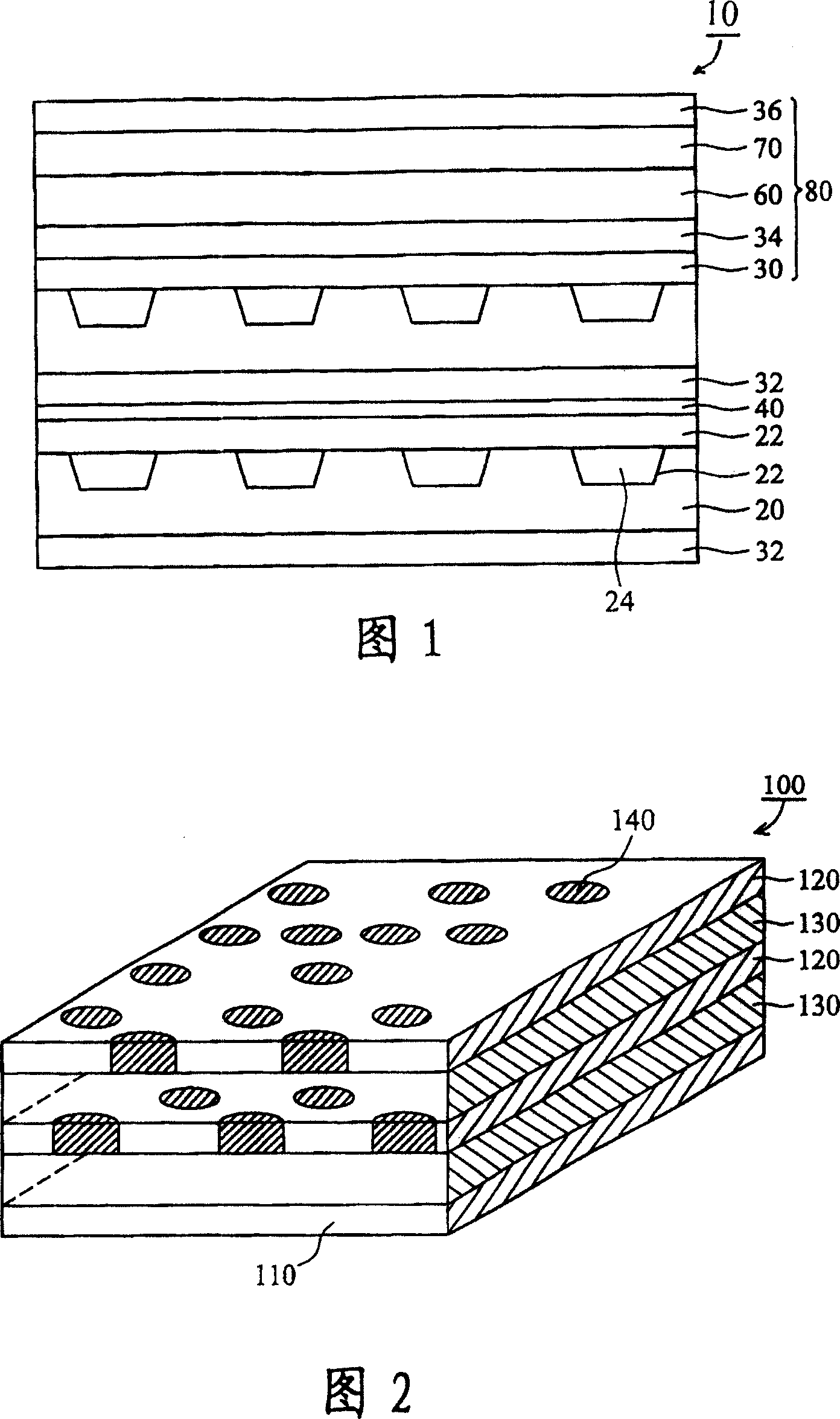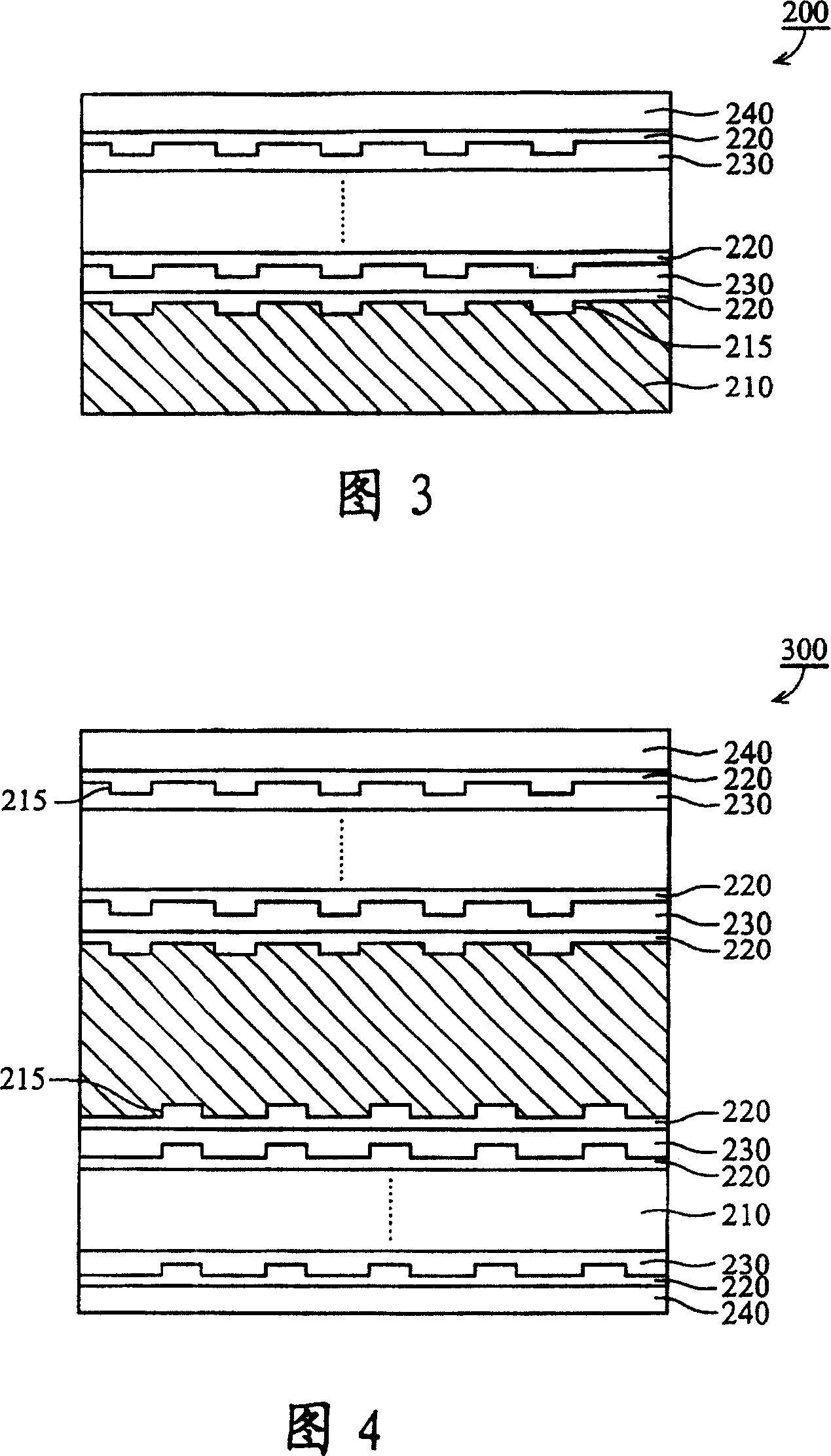Optical recording medium having three-dimensional data graphics and method for making same
A technology for optical recording and three-dimensional data, which is applied in the manufacture of optical record carriers, optical record carriers, data recording, etc. It can solve the problems of forming data pits by coating method, reducing signal/noise, low quantum efficiency, etc., and achieving the best recording sensitivity. and read characteristics, improve the signal and the effect of high storage capacity
- Summary
- Abstract
- Description
- Claims
- Application Information
AI Technical Summary
Problems solved by technology
Method used
Image
Examples
Embodiment 1
[0105] Synthesis of Precursor X1
[0106] Get a reaction flask, put 40ml of acetic anhydride, 4g of compound W1 and 3.1ml of bromine (Br 2 ), reacted in an ice bath. Then, after reacting for 30 minutes, the reaction solution was slowly poured into a mixture of 200 ml of water and ethyl acetate (1:1). After multiple extractions, dehydration with magnesium sulfate, filtration and concentration, 6.82 gold solid was obtained with a purity of 80.7% and a yield of 95.2%. The reaction flow is as follows:
[0107]
Embodiment 2
[0109] Synthesis of Precursor X2
[0110] Take a reaction bottle, put 40ml of ethanol, 2g (7.2 mole) of compound W2 and 2.58g (14.4 mole) of n-bromosuccinimide (NBS) into the bottle, and react in an ice bath. Then, after reacting for 15 minutes, 1.74g (14.4mmol) of anhydrous magnesium sulfate and 0.74g (6.5mmol) of 3,4-hexanedione (3,4-hexanedione) were added into the reaction flask and reacted for 1 hour. After the reaction was complete, the mixture was extracted with ethyl acetate and water, dehydrated with magnesium sulfate, filtered and concentrated to obtain 1 g of a black solid with a purity of 71% and a yield of 31.1%. The reaction flow is as follows:
[0111]
Embodiment 3
[0113] Synthesis of Precursor Z1
[0114] Get a reaction flask, put 40ml of THF, 2.0g (5.47mmol) of compound Y1, 2.97g (11.7mmol) of compound Y4, 2.15g (21.9mmol) of potassium acetate and 0.045g (5.47×10 -2 mmol) of Pd(dppf)Cl 2 CH 2 Cl 2 (Dichloro[1,1'-bis(diphenylphosphino)ferrocene]palladium(II)dichloromethane adduct), heated to 60°C under nitrogen atmosphere. After reacting for 120 hours, extract with toluene and water (1:1), remove water with magnesium sulfate, filter and concentrate, and decolorize with activated carbon. Afterwards, recrystallization using isopropanol (IPA) gave a yellow solid with a yield of 41%. The reaction flow is as follows:
[0115]
PUM
| Property | Measurement | Unit |
|---|---|---|
| Quantum efficiency | aaaaa | aaaaa |
| Efficiency | aaaaa | aaaaa |
Abstract
Description
Claims
Application Information
 Login to View More
Login to View More - R&D
- Intellectual Property
- Life Sciences
- Materials
- Tech Scout
- Unparalleled Data Quality
- Higher Quality Content
- 60% Fewer Hallucinations
Browse by: Latest US Patents, China's latest patents, Technical Efficacy Thesaurus, Application Domain, Technology Topic, Popular Technical Reports.
© 2025 PatSnap. All rights reserved.Legal|Privacy policy|Modern Slavery Act Transparency Statement|Sitemap|About US| Contact US: help@patsnap.com



